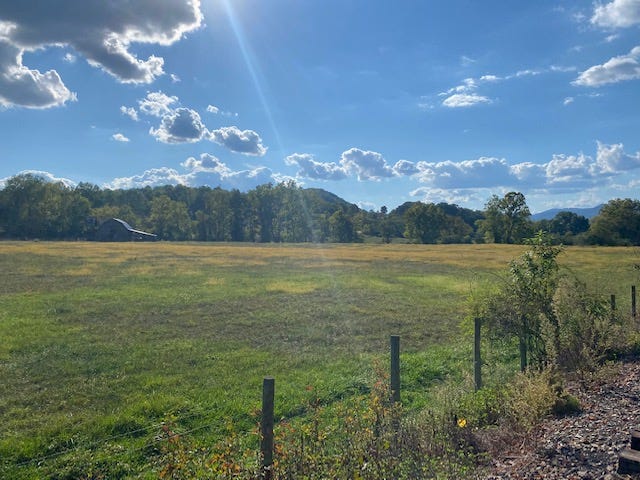Corporate American Homesteader Series
People often talk of leaving 9-to-5 to homestead, but what about the balance of both?
The narrative threaded throughout the homesteader community is one of leaving Corporate America to farm full time. One can easily find hundreds of videos of vloggers sharing their back-to-the-land experiences, how-tos, and updates at milestone intervals post-9-to-5 life. Among the pillars of the homesteading and farming community, Joel Salatin published a book earlier this year that explores the trend of people leaving urban areas and their jobs to move to the country and homestead. His book HOMESTEAD TSUNAMI, which I haven’t read yet, dives into the why behind this move.
More people want country life
Research conglomerates have cited these trendy moves to country living for several years now. The pandemic shutdown is often attributed as the catalyst for the move—a time when folks in urban areas were isolated in small apartments with nowhere to go, when workers previously tethered to desks suddenly had the freedom of remote work and location independence, when no commutes or job losses allowed time for people to reconsider their values and lifestyle. Research from Gallup shows the country life preference clearly sparked with the 2020 mayhem. In 2018, 39% of people surveyed would prefer to live in the country if they could live anywhere they wished. By 2020, that number jumped to 48%.
After 10 years of decline, rural populations are growing again.
The USDA’s 2023 Rural America at a Glance leads with this migration trend. After 10 years of decline, rural populations are growing again. “Most rural counties saw gains in population because of net domestic migration, with 481 growing by 2% or more during 2020–22. These counties are typically found on the periphery of large urban areas and in recreation and retirement destinations, such as the northern Great Lakes, the southern Appalachians and Ozarks, and the Rocky Mountains.” According to more recent relocation data, South Carolina has been the #1 destination for moving Americans.
Flip the narrative: Work full time and farm
With all of that said, I’m kicking off a series of posts centered on the flipside of the narrative: The benefits of maintaining full-time employment while homesteading and (small-scale or hobby) farming. In the coming months I’ll dive into different ways that full-time employment can improve farm life.
In the forthcoming posts I’ll explore sense of identity, entrepreneurship, and health in relation to farming while working full time.
I’m not an outsider when it comes to leaving traditional 9-to-5 employment. In 2010, I gave 6 weeks’ notice to my employer and left my job in marketing management to run my freelance writing business. I ran my writing business full time for nearly a decade, and then scaled it back when an unexpected contract opportunity came my way. This later turned into my current role in Corporate America.
In the forthcoming posts I’ll explore sense of identity, entrepreneurship, and health in relation to farming while working full time. I’ll also pull in research from areas that may not be getting attention in the larger migration narrative—like the data that shows Americans are leaving America and, within America—moving trends are dropping.
As this series launches, if you know anyone working full time while farming who would be interested in being interviewed (either credited or anonymously), please send them my way.




